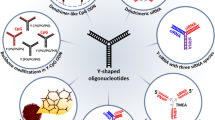Due to charge interaction, cationic lipids spontaneously associate with nucleic acids, resulting in the formation of so-called lipoplexes. Lipoplexes are membranous structures that are capable of transducing genes into cells, eventually leading to expression of the genes (transfection). The mechanism involved in the cellular uptake of lipoplexes is most likely endocytosis, which occurs after nonspecific charge-mediated binding to cellular receptors. An important step in the transfection process following the actual internalization of lipoplexes is the release of the lipoplex and/or its DNA into the cytoplasm in order to evade lysosomal degradation. Here, the membranous nature of the lipoplex seems to be crucial in that it allows the exchange of lipids between the endosomal membrane and the lipoplex, which results in membrane perturbations that are a prerequisite in the endosomal escape of DNA. Interestingly, a hexagonal phase of the lipoplexes has been correlated with efficient transfection and it can be envisaged that such a phase could be instrumental in the creation of membrane perturbations. Subsequent to its release into the cytoplasm, the DNA has to be transferred into the nucleus. The nuclear import of DNA is most likely a protein-mediated process. In addition, the nuclear uptake of DNA may be facilitated at the time of nuclear envelope disassembly during mitosis. Currently, cationic liposomes are widely used as gene carrier system to deliver nucleic acids into cells in culture to study the cell-biological functioning of genes plus accompanying proteins. Ultimately, cationic lipids may be used in gene therapeutic protocols.
Similar content being viewed by others
Author information
Authors and Affiliations
Rights and permissions
About this article
Cite this article
Zuhorn, I., Hoekstra, D. On the Mechanism of Cationic Amphiphile-mediated Transfection. To Fuse or not to Fuse: Is that the Question? . J. Membrane Biol. 189, 167–179 (2002). https://doi.org/10.1007/s00232-002-1015-7
Received:
Issue Date:
DOI: https://doi.org/10.1007/s00232-002-1015-7




